How to Layer Window Treatments: A Complete Guide
Looking to enhance your window coverings? At TWOPAGES, we're convinced that the right combination can seriously level up both the functionality and aesthetics of any room. Let’s dive into how you can transform your space with some savvy curtain layering.
What Does Layering Window Treatments Mean?
Layered window treatments refer to a combination of multiple window treatments on the same window to create a more dynamic and functional design.

From: @alexisandraaustin
Why Opt for Layered Window Treatments?
Functionality
First and foremost, layered window treatments provide enhanced control over light and privacy. This setup allows you to fine-tune the amount of natural light entering your space while maintaining the desired level of seclusion from the outside world.
Aesthetic Appeal
Beyond practicality, layering different window treatments adds depth and dimensional intrigue to your room, creating a visually striking and refined appearance that surpasses that of a single layer. This approach also enables you to blend complementary colors, patterns, and textures, thereby enhancing the visual appeal of your overall interior design.
Options for Combining Different Treatments
1. Double Layer Curtains with Sheer
Nothing epitomizes classic elegance quite like the combination of sheer curtains and heavier draperies. Sheers are excellent for letting in ample natural light and creating a light, airy atmosphere. When paired with more substantial drapes, they offer versatility—light and breezy during the day, cozy and private by night. This timeless combination works exceptionally well in living rooms and dining areas where control over lighting is crucial yet where you might also want to create an inviting, warm atmosphere for entertaining.

From: @lifewithtanya_xo
2. Roman Shades and Curtains
For those who lean towards a cleaner, more streamlined look, Roman shades and draperies are a match made in heaven. Kitchens and bathrooms benefit greatly from Roman shades due to their neat appearance and ease of use. Known for their neat lines and easy operation, Roman shades are perfect for controlling light without sacrificing style. For versatility, choose light-filtering Roman Shades for daytime privacy and blackout curtains to block light at night. This combination is ideal for living rooms, dining areas, or bedrooms that scream for a touch of modern elegance.

From: @leighallison_design
3. Bamboo Shades with Curtains
If you’re looking to infuse some organic texture and color into your space, bamboo shades have got you covered. Without lining, the natural woven fibers of these shades let light through, while still cutting glare to soften the light. Adding bamboo shades not only enhances the visual appeal but also increases the textural play within your interiors, injecting a rustic charm into your décor. Combine them with soft draperies, and you‘ve got yourself a visually adjustable light filtration system that can make any room feel like a retreat, all while adding more depth and character through varied textures.

From: @Crazywonderfulblog
4. Cellular Shade with Drapes
Cellular shade combines style and functionality with its innovative honeycomb design, offering superior heat insulation, anti-UV protection, and noise reduction. These energy-efficient shades help maintain a comfortable indoor temperature year-round, keeping your home cool in summer and warm in winter. However, the modern appearance of cellular shades might not suit every home's aesthetic. Adding draperies on top can introduce a more traditional vibe and soften the overall look of your room, making it suitable for bedrooms, nurseries, or home offices where temperature control and privacy are top priorities.

From: @creatingyourcasa
5. Roller Shades with Drapes
Roller shades offer a sleek and modern appearance at a relatively affordable price. They operate smoothly and maintain a low profile, serving as a neat backdrop for more ornate draperies. This pairing strikes a balance between simplicity and luxury, where the functional roller shades enhance the decorative appeal of the drapes.
Shades can leave small gaps on the sides of the window where light can shine through. Adding drapes on top will help give you more darkness and a more upscale look.
How to Layer Window Treatments?
To layer the window treatments, it's crucial to balance functionality with aesthetic appeal. Here’s a quick guide:
-
Assess Function Needs
Begin by considering what you want to achieve with your window treatments. If you anticipate adjusting both layers daily, opt for systems that are easy to control. Alternatively, if your aim is more decorative, such as using stationary drapery panels, ensure that the functional layer underneath can independently handle all your light and privacy requirements
-
Select Your Primary Functional Layer
Once understanding your function needs, choose the base layer that serves the needs most frequently. Generally, this layer should offer simplicity and versatility, such as shades and blinds, which provide the foundation for light control, insulation, and privacy in your space.
-
Choose a Complementary Secondary Layer
For the secondary layer, which is typically adjusted less frequently, choose a style that makes a statement. This layer offers an opportunity for bolder, more expressive design elements that can become the centerpiece of your room's decor. It is crucial to ensure that this layer complements the primary one while also blending flawlessly with the general theme and style of your interior.
Tips for Coordinating Colors, Patterns, and Textures
To achieve successful layering, carefully coordinate colors, patterns, and textures. Begin by selecting a cohesive color palette that enhances your room’s design. Add depth and visual interest by mixing textures—for example, pair smooth Roman shades with textured drapes. When using patterns, balance bold designs with neutral elements to create harmony and prevent the space from feeling overwhelming.

from:@withsarale
Conclusion
Layering window treatments allows for versatility and a visually appealing style that enhances the usability of a space. By considering the specific needs of each room—be it light control, privacy, or style—homeowners can create layered, dynamic interiors that resonate with personal taste and lifestyle requirements. Go ahead, mix, match, and create window magic with TWOPAGES curtains!





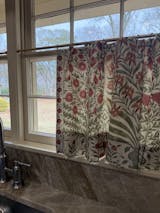

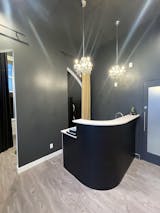

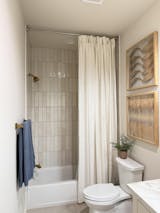
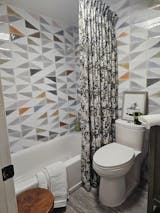

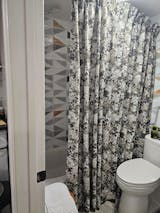
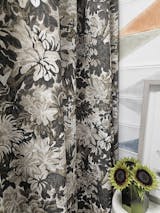
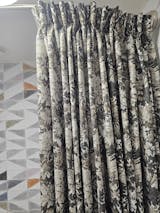

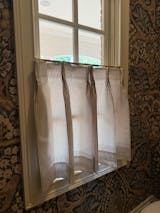
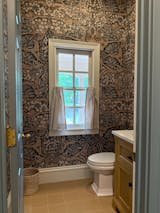
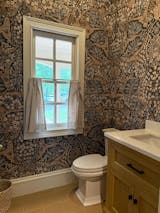

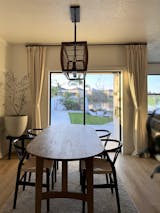
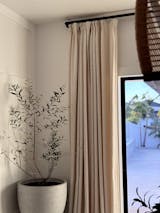
Leave a comment